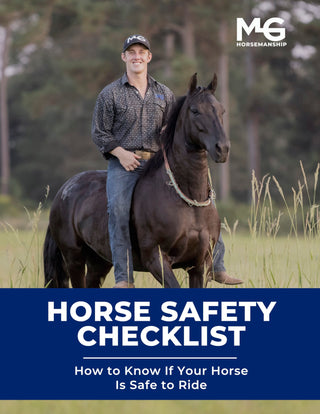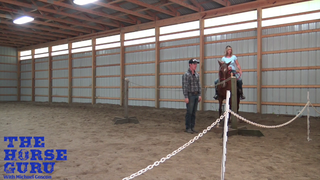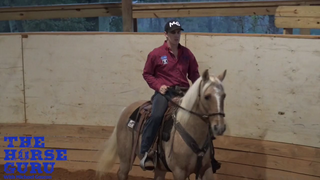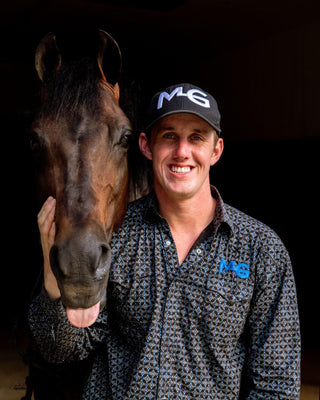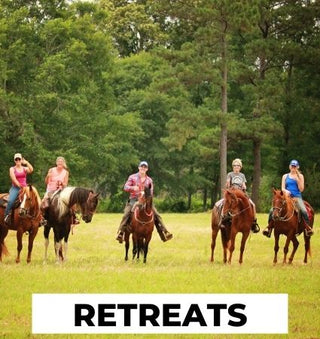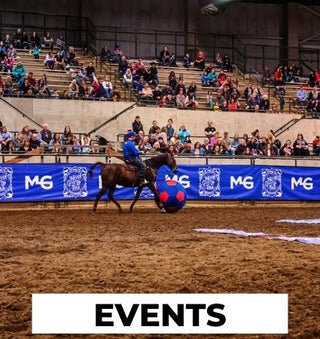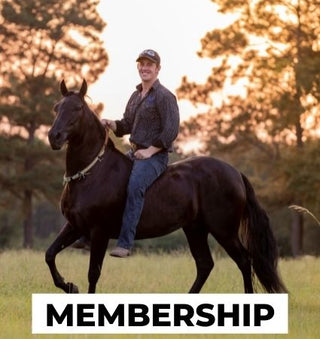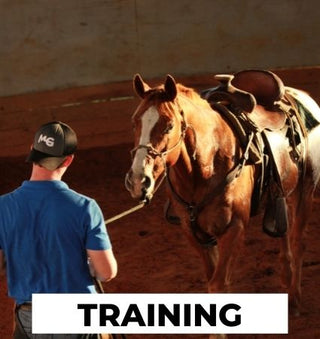Watch the Video Here or continue reading below!
When people think about obstacle horses, they often picture advanced groundwork or elaborate training setups. But according to world-renowned horse trainer Michael Gascon, the secret to creating a reliable, obstacle-savvy horse isn’t complex — it’s patience and consistency. In this post, we’ll explore how simple practices like tying, bathing, and exposure can dramatically improve your horse’s patience, calmness, and overall behavior — making them obstacle-ready from the ground up.
Why Patience Is the Foundation of Every Great Horse
Some horses struggle to stand still, paw constantly, or act anxious in unfamiliar settings. These aren’t just “bad habits” — they’re signs of a lack of patience. As Michael puts it, “Every time we ride a horse, we’re going to bathe the horse like they’re a show horse… and they’re going to stand and dry.”
That drying time, often an hour or more, becomes part of the training. Over time, the horse learns that standing still and waiting isn’t a punishment — it’s part of daily life.
Start With Tying Practice: Daily Habits That Build Obedience
Horses are naturally inclined to meander, like sharks constantly moving. When you ask them to stop and stay still — especially tied — it can be a mental and physical challenge.
Michael’s team practices this by tying horses in safe, shaded areas for extended periods. Whether it’s to a sturdy H-post, a tree with a swivel line, or a secure rail, the goal is the same: get them comfortable doing nothing.
✅ Pro Tip: Always use a rope halter and tie to something immovable — no clips or metal hardware that can break or teach bad habits.
Don’t Wait Until the Trail Ride: Practice at Home First
A common mistake riders make is waiting until they’re on the trail or at a show to teach a horse to stand tied. The first time a horse is expected to “chill” shouldn’t be in an unfamiliar place. Instead, incorporate tying into your daily routine. Tie them while you clean stalls, saddle another horse, or go about your chores.
Learn from the Amish & Ranch Horses: Built-in Patience Training
Amish horses are some of the calmest, most obedient horses around. Why? Because they spend hours daily tied in tie stalls — standing still and waiting when they’re not working.
Similarly, ranch horses are either working or waiting. When a cowboy drops the reins, the horse knows it’s time to relax. That automatic on-off switch is what you want in an obstacle horse.
Ideal Tying Locations & Setups
Here are some safe and effective ways to tie your horse for training:
-
H-Posts: Strong, permanent, shaded posts perfect for regular tying.
-
Trees with Swivel Lines: Portable and practical, especially if you don’t have permanent posts.
-
Tack Room Tie-Offs: Saddled horses can wait in secure, shaded areas before being worked.
-
Concrete-Set Posts: Ensure stability with 6x6 posts set in concrete, ideal for long-term training.
🔒 Safety Tip: Never tie to weak or movable objects like thin wooden posts or fences that might break if the horse pulls back.
Environmental Exposure = A More Forgiving Horse
Tying is about more than just standing still. Horses tied near activity — where people walk by, other horses are worked, or traffic moves — get desensitized naturally. The more your horse is exposed to these daily distractions in a safe, controlled way, the more confident and forgiving they’ll be during obstacles or new challenges.
Final Thoughts: The Easiest Way to Make a Great Obstacle Horse
You don’t need fancy equipment or specialized obstacle courses to create a great horse. Just tie your horse more often, in the right environments, and for the right amount of time. It builds patience, teaches stillness, and lays the foundation for confident behavior in any situation — from trail rides to obstacle courses.
As Michael Gascon says:
“Trust me — tie your horse more, and you’ll make a more forgiving horse.



